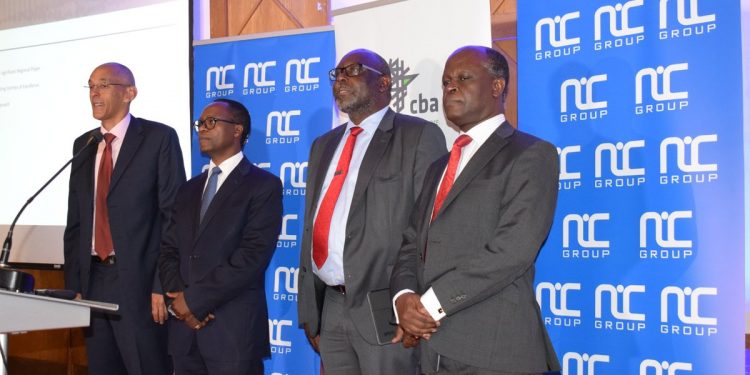The planned merger between Commercial Bank of Africa Ltd and NIC Group Plc is a credit positive for the two banks, says Moody’s Investor Service.
This is because it will create a stronger entity, and is a huge boost to Kenya’s overall banking system. The CBA-NIC merger will also support the country’s financial stability.
This will depend, however, on how the banks will effectively manage the high integration risks stemming from eliminating numerous positions, retaining customers during the transition process, and merging their financial and operational systems and infrastructure.
“The merger plan is credit positive for both Kenyan Banks – CBA and NIC- because it will create a stronger entity, and for Kenya’s overall banking system, because it will support the country’s financial stability,” says Christos Theofilou, vice president and banking analyst at Moody’s.
CBA’s reported total capital to risk-weighted assets ratio was 17.4 per cent at the end of 2017, while NIC’s was 19.9 per cent.
The merger will also add to the small number of large, strong banks in Kenya, a credit positive for the over-banked sector and, by extension, the country’s financial stability. Kenya’s banking sector had 40 commercial banks as of the end of June 2018, although it has been consolidating over the past few years.

Despite integration costs in the first two years of the merger, cost synergies resulting from staff and branch rationalisation and reduced funding costs from the stronger banking franchise have the potential to support profitability.
The two banks announced that they had agreed on the share-swap ratio for their planned merger, which would create the third-largest bank in Kenya with assets of over Ksh400 billion and a market share of 9.4 per cent, behind KCB Bank Kenya Limited and Equity Bank Kenya Limited, and slightly ahead of Co-operative Bank of Kenya Limited.
It will also create Kenya’s second-largest bank in terms of deposits after KCB Bank. As of the end of September 2018, the two lenders were similarly sized second-tier banks, with CBA having a market share of 5.2 per cent in terms of assets and NIC 4.3 per cent.

The merged entity will be able bolster its market position by capitalising on CBA and NIC’s individual strengths, in particular CBA’s strong retail client base and the success of its M-Shwari mobile banking platform, as well as NIC’s leading asset financing franchise and large base of mid-sized corporate clients. Their increased scale will also allow them to offer higher credit limits to large corporate clients.
NIC Group will be the holding company of the merged entity and remain listed on the Nairobi stock exchange. According to the preliminary share-swap agreement, CBA’s 34 shareholders will own 53 per cent of the shares in NIC Group, while NIC Group’s current shareholders’ ownership will fall to 47 per cent.
The merger is subject to certain conditions including shareholder approvals, which the banks expect in the first quarter of 2019; regulatory approvals, expected in the second quarter of 2019; and various transactional agreements that will formally complete the merger, expected in the third quarter of 2019.




